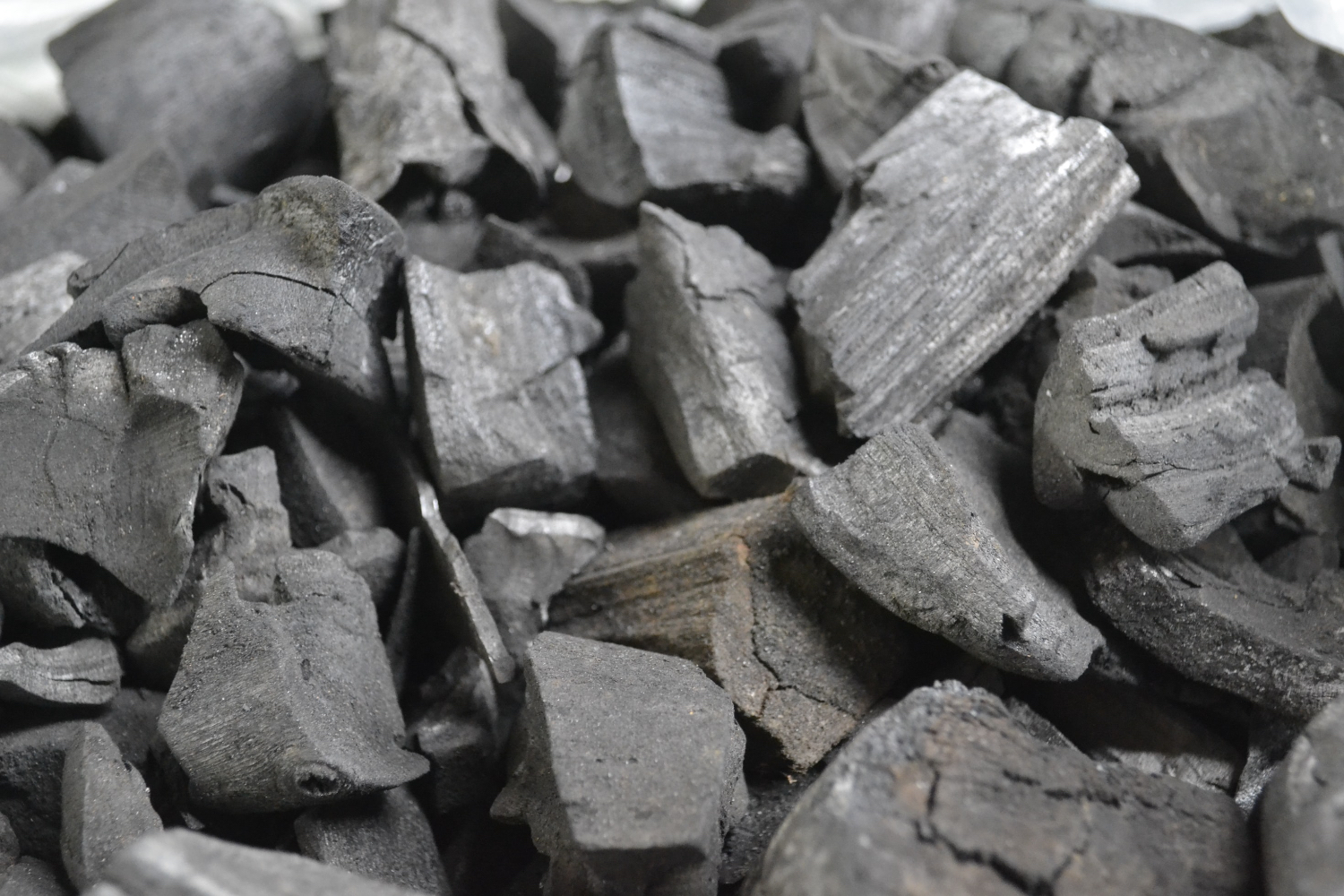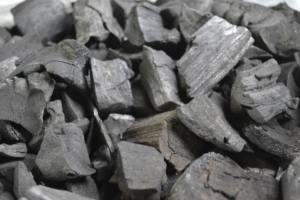This article is also available in Japanese:日本語でも読めます
The IPCC (Intergovernmental Panel on Climate Change) has been recommending reducing greenhouse gas emissions (esp. CO2) to zero by 2050. Of course, the priority is to drastically reduce emissions, however, at the current rate, experts from IEA and IPCC agree that we must resort to sequestering CO2 and storing it in the ground. One such promising yet lowkey solution to achieve that is biochar.
What is biochar?
Biochar is a type of charcoal derived from plants. It is produced by the pyrolysis of biomass residues, giving it carbon storage potential and numerous applications. Not only does it sequester part of the carbon contained in the biomass, but also retains it long-term if used in ways that allow it to continue functioning as a carbon sink.

Biochar is traditionally a byproduct of renewable energy and heat generation and has been used for centuries as a soil remediation solution in agriculture. Traditionally, farmers use kilns with rather simple designs such as the one below to produce biochar.
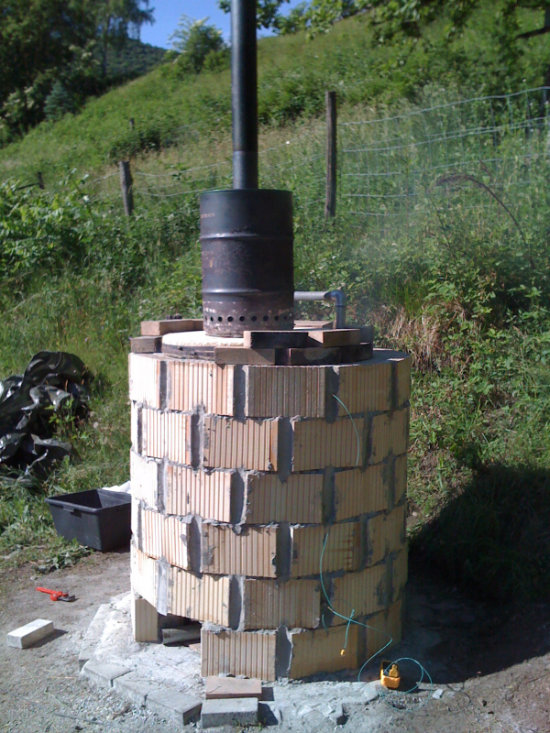
However, the designs of kilns have improved significantly to increase productivity, as well as to capture the fumes from the pyrolysis which can be used as fuels (synthetic gases and oils) or pesticides (wood vinegar).
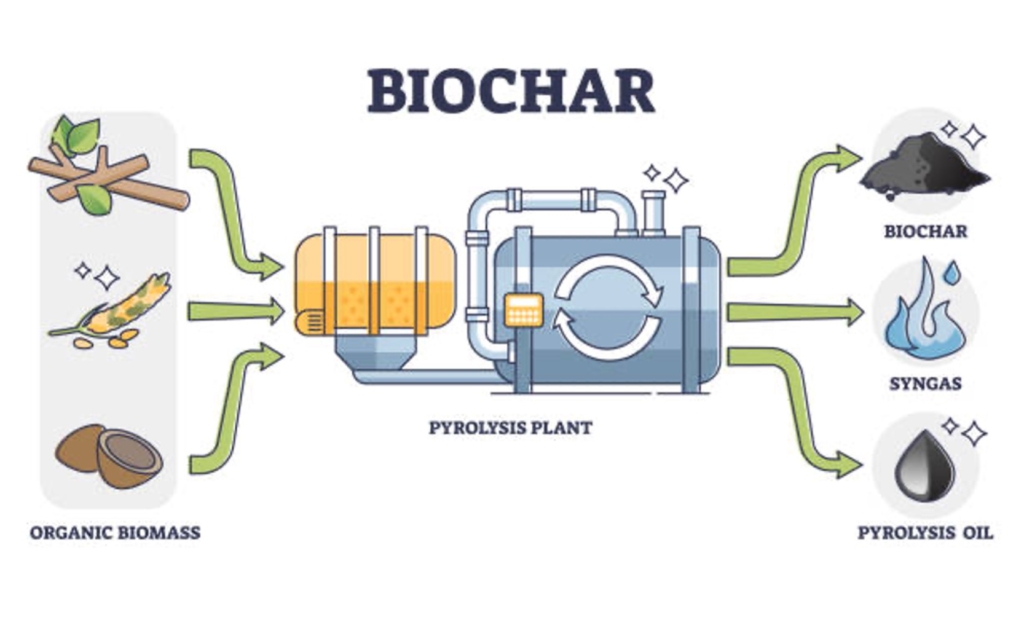
Why biochar now?
Until now, the cost of biochar production didn’t make sense. Today, the development of the carbon credit market is changing the situation. Beyond its ability to produce energy (heat and synthetic fuels) and support agriculture (fertilizer, water retainer, and pesticide), biochar has been, as mentioned above, a good solution to capture carbon for centuries and can market carbon credit through its production.
There are currently 3 income sources from the production of biochar:
- Biochar as a feed for soil improvement in agriculture
- Energy from heat, synthetic fuels (inc. hydrogen) and gases
- Carbon credit
What are the benefits of biochar for agriculture?
Due to its porosity and micro-cavities, biochar allows better retention of water and nutrients, while increasing the microbial activity of the soil. Thus, it limits soil leaching and reduces water stress for plants and fertilizer needs, while maintaining living soil. The stability of biochar in soils can reach several hundred years. The use of biochar thus makes it possible to improve the state of the soils and to increase the output of the cultures.
The biomass used for biochar is typically a residue of existing agriculture value chains (leaves, stems, fruit pods, bagasse, etc) and forestry (sawdust, trimmings, etc).
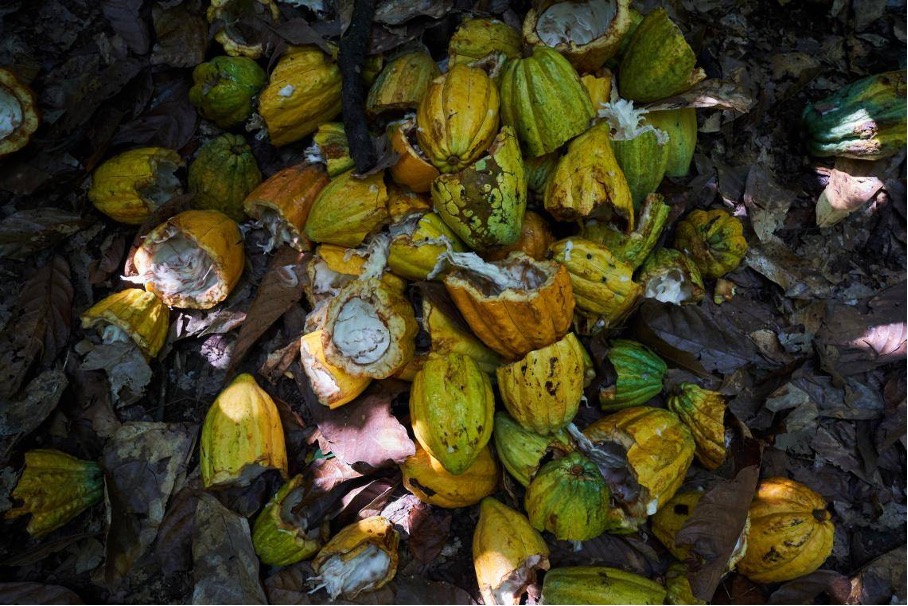
Biochar can thus be sold for farmers to bury it in the ground and improve their yield.
How efficient is it at energy creation?
The economics of renewable energy production from pyrolysis doesn’t really make sense otherwise carbon credits wouldn’t be needed to make its production profitable on a large scale. Nonetheless, biochar plants for selected crop residues such as Maize cobs or wood provide a more cost-effective source of electricity than diesel gensets.
As shown in the graph below (upper orange line), the cost of generation with diesel was 1.37 USD / KWh in 2020 with Diesel at 1 USD per liter and closer to 2 USD / KWh with recent prices. In a 10kW plant, the cost of electricity through the combustion of Maise cobs is around 85 cents and on a 100kW plant, roughly 35 cents. The scale does matter, but even at 10kW, there is room to fund a positive NPV project to develop such a plant as an alternative to gensets.
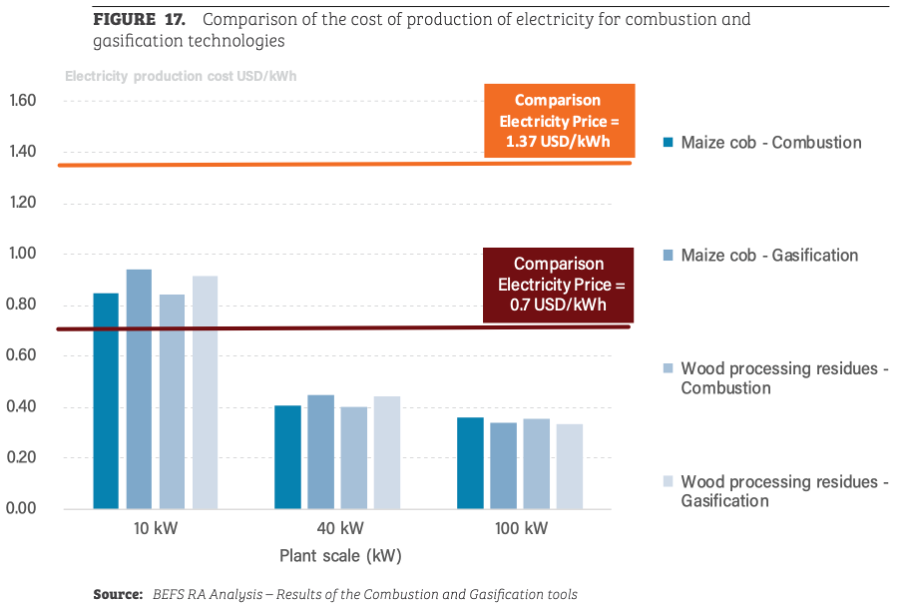
Are carbon credits from biochar a significant source of revenue?
Depending on the quality and carbon content, one ton of biochar can sequester between 2.5 and 3 tons of CO2 equivalent according to CarbonLoop, one of the leading startups in this space. These credits are primarily traded on the voluntary market at rates of 150 to 200 USD / ton of carbon.
1 ton of biomass can then generate 375 USD to 680 USD in carbon credits on top of the revenues from energy and feed.
What are the main issues to scale Biochar?
1. Residue availability and requirements before use
- Residues are often used by farmers as feed for animals or fuel to cook at home which reduces the amount available for biochar production
- Most of the residues are also left in the field and thus require transport to the kiln before pyrolysis which negatively impacts the economics
- Residues from crops vary in their energy production potential as well as in their sequestration potential
- On top, the moisture content of these residues often required drying them before pyrolysis to use as feed
The graph below extracted from a Biochar evaluation report by FAO provides a hint at the potential of various crops.
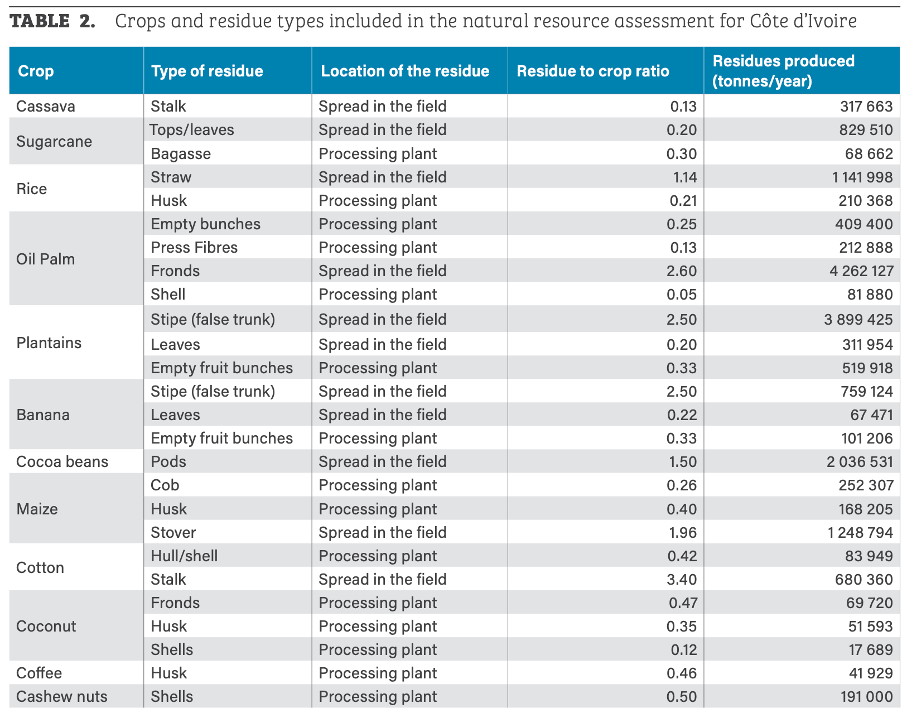
2. Consistency of the biochar production for carbon credit certification
Biochar content needs to be consistent to accurately certify and sell the carbon credits. When dealing with biowaste, consistency is not always a primary concern, and the education of farmers is required to ensure it. Otherwise, the cost (economic and operational) of certification can become a showstopper.
3. Affordable and flexible technology to produce electricity and synthetic gases or oils
The 3 revenue streams (feed, energy, carbon credit) are necessary to truly scale biochar. However low-cost technologies to capture the full potential energy are too expensive to deploy in emerging economies which on the other hand represent the largest potential for biochar production as primary agriculture-driven economies with lower labor costs.
Startups are trying to tackle this challenge
Various startups are developing solutions (equipment, turnkey solutions, etc) to scale biochar in emerging economies by providing cost-effective ways to produce biochar (e.g. TAKACHAR or HIVE) as well as improving the quality of the biochar to optimize its marketability (e.g. NetZero or Carbo Culture, CARBONLOOP) or by supporting the integration of carbon credits as a revenue streams (e.g. puro-earth, CarbonFuture).
The efforts from these startups to lower the barriers to scaling biochar are supported by various financing institutions at the global (e.g. FAO, UN, Worldbank, etc), regional (e.g. EU, ADB, etc) or, national levels (government and banks).
Recent planned projects / investments in developing economies
- NetZero, one of the leading startups has been very active in various countries:
- Its first large-scale biochar production plant was set up in Cameroon. The plant sits next to Synergie Nord Sud (SNS), Cameroon’s largest coffee-processing plant, and will use coffee husks as feed. Following this launch, during COP26, Cameroon signed an MOU with NetZero to scale the production. It was the first country in the world to integrate industrial biochar production into its climate and sustainable development strategy.
- NetZero also launched the first biochar production plant in Brazil earlier this year in Minas Gerais. In collaboration with a coffee manufacturer, the plant will use coffee husks and will reach a production capacity of 4,000 tonnes per year – double the output of NetZero’s plant in Cameroon.
- The EU-funded BIO4Africa project has provided bio-based technology to several African countries including Uganda. This will lead to opportunities for African farmers and communities to produce biochar-based products and develop new businesses.
- More recently, CarbonFuture announced a partnership with Biochar Life (a social venture) to buy its biochar-based carbon credits from various projects in Malawi, Kenya, and Thailand.
EIS Insight
- Biochar clearly has potential but we are still very far from reaching the full potential of this solution which is very much needed to curb emissions.
- Carbon credits are very much needed to support biochar development. Even though the price for carbon credit has gone up and especially so in the EU, it is still very low in many geographies including the US, China, etc.
- The existing projects in Africa (e.g. NetZero’s plants) are large scale which is not in line with the typical agriculture in developing economies which still rely heavily on small-scale farming (70% in Africa). Technologies need to be further developed and adapted to close the gap in this situation.
- Nonetheless, with technological improvement and a tighter carbon emission market, we should see biochar plants flourishing globally and not only contributing to food security, sequestering carbon, and mediating climate change but also the development of green hydrogen production.


